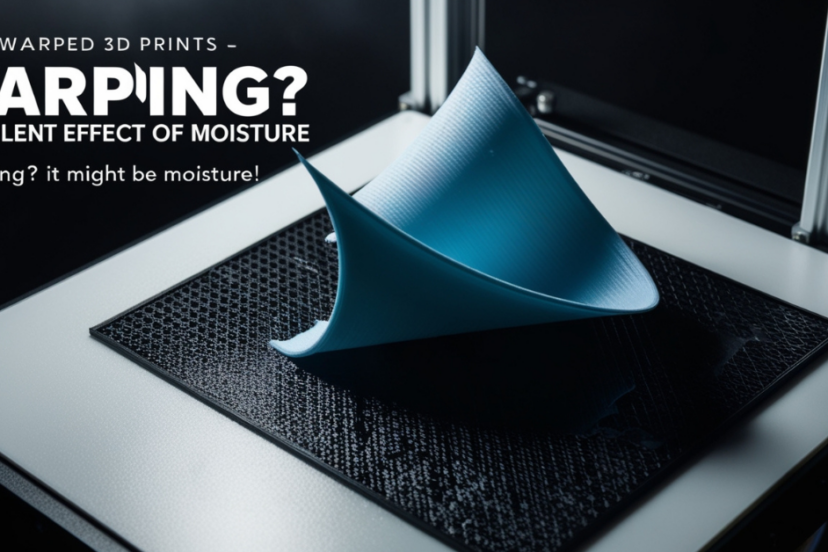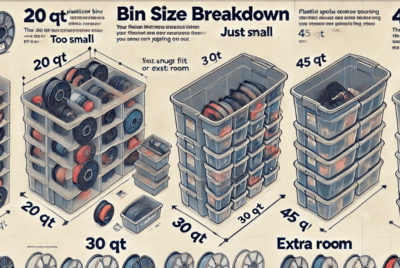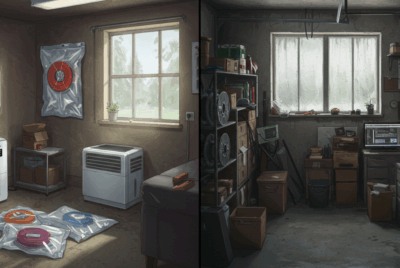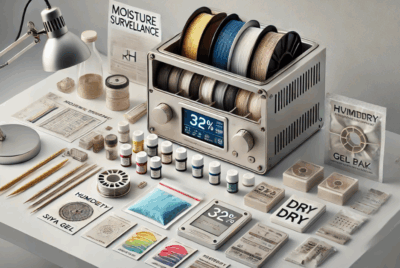How does moisture affect 3D prints?
Moisture can have a significant impact on the quality and reliability of 3D prints. Here’s how it affects your prints:
1. Poor Print Quality
- Bubbling and Popping Sounds: When filament absorbs moisture, it turns into steam when heated during printing. This causes bubbles to form inside the filament, leading to popping or crackling sounds as the filament is extruded. These bubbles can result in a rough, uneven surface finish.
- What to Look For: If you hear unusual popping sounds or notice small holes in your prints, moisture could be the culprit.
2. Inconsistent Extrusion
- Uneven Flow: Moisture can cause inconsistent extrusion because the water inside the filament turns to steam during printing, causing fluctuations in the filament’s flow. This can lead to gaps, under-extrusion, and weak layers.
- What to Look For: If your prints have sections that are thin or have gaps between layers, it could be due to moisture affecting the filament.
3. Weak Prints
- Reduced Strength: Moisture absorbed by the filament can weaken the material, making your prints more brittle. Filaments like Nylon and PETG are particularly prone to moisture absorption, and this can affect their structural integrity.
- What to Look For: If your prints feel fragile or break easily, it might be because moisture has weakened the filament.
4. Warping and Curling
- Distorted Prints: Moisture can cause certain filament types to expand or contract unevenly during printing, leading to warping or curling, particularly in the first few layers. This is especially noticeable with materials like ABS and Nylon.
- What to Look For: Warped edges, corners curling up, or prints lifting from the bed are signs that moisture may have caused issues.
5. Adhesion Problems
- Layer Adhesion Issues: Moisture affects the bonding between layers of filament during printing, leading to poor adhesion and causing layers to separate or delaminate. This is particularly problematic for prints that require strength and durability.
- What to Look For: If your prints have layers that peel or separate easily, it could be due to moisture disrupting layer adhesion.
6. Discoloration and Surface Imperfections
- Aesthetic Issues: Filament that has absorbed moisture may change color slightly, causing prints to have a dull or inconsistent appearance. In some cases, moisture can also create visible marks on the surface of the print.
- What to Look For: If your prints look faded or have streaks or blemishes, moisture could be the cause.
7. Increased Printing Time
- Slower Prints: Because of the moisture in the filament, the extrusion process becomes less efficient. The 3D printer may need to compensate for inconsistent filament flow, leading to slower print speeds and longer print times.
- What to Look For: If your prints are taking longer than usual or the extrusion process feels uneven, it might be moisture affecting the filament.
How to Fix Moisture Issues:
- Dry Your Filament: Use a filament dryer, oven, or desiccant containers to remove moisture from filament before printing.
- Proper Storage: Store filament in airtight containers with desiccants or vacuum-sealed bags to prevent moisture absorption during storage. By preventing moisture from affecting your filament, you’ll be able to achieve higher-quality prints with better consistency and durability.




